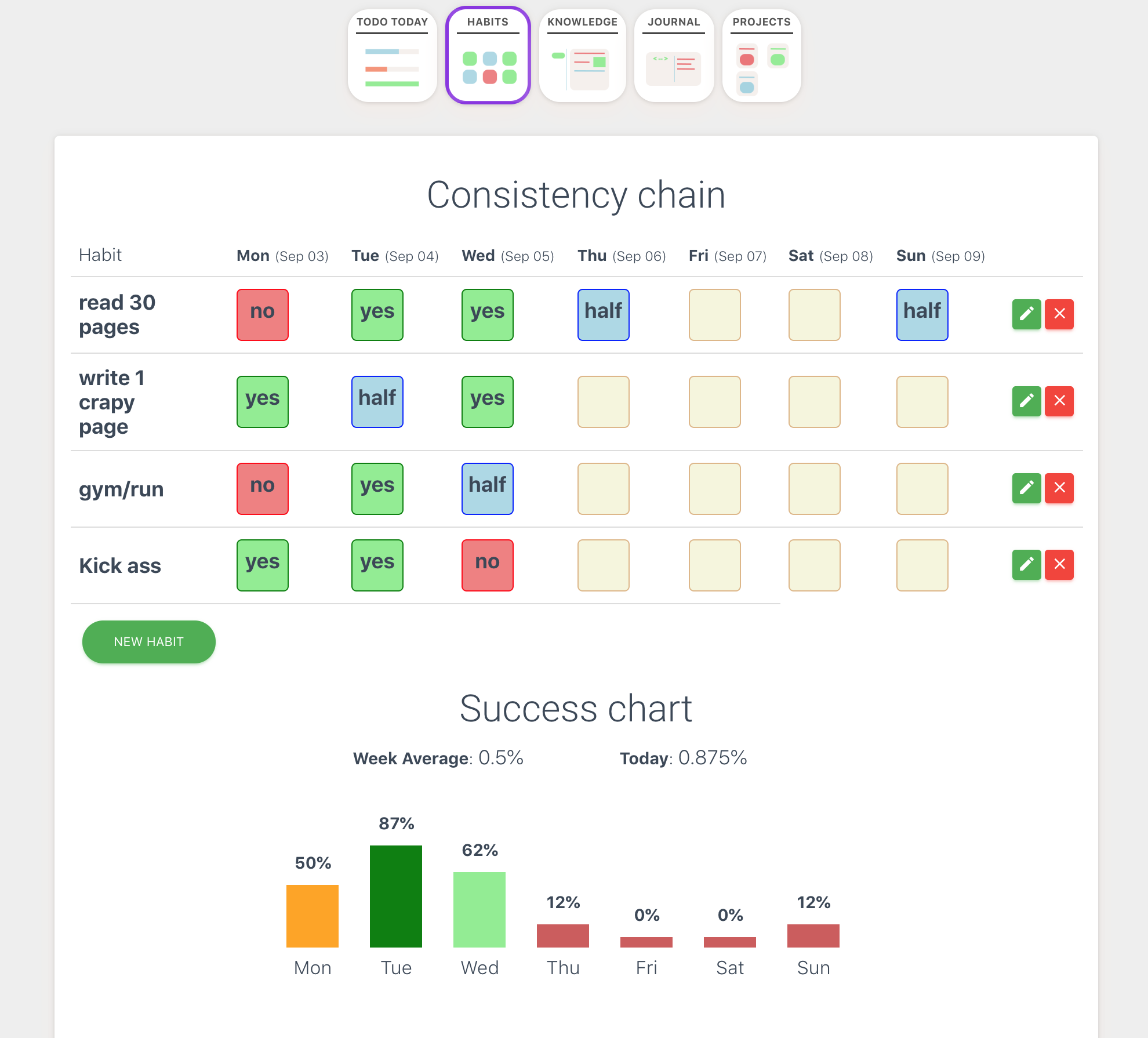
In this day and age, there are no shortages of habits we want to develop. If you spend few minutes on Instagram or Twitter browsing through #habits or #success you will see that everyone wakes up at 4am, reads 10 books a week, writes 10 articles a week, meditates, works out and everyone has the optimal diet.
Well if you are starting a company or any other venture that requires dedication, other things will have to suffer. Point being all these habits are difficult to develop at once.
I’m going to share my process on developing new habits and how I know when it’s time to add new ones without feeling overwhelmed.
Two ways to define new habits
Outcome oriented habits
Examples of outcome oriented habits are:
- Write 1 article per day
- Read 50 pages per day
- 2 Instagram posts per day
These habits work well when you have some experience with the tasks, in this case writing, reading and Instagram. But when starting something new it’s difficult to estimate a specific outcome because you have no measure of your ability.
If you have no experience writing, then 1 article per day is difficult. For habits in completely new areas, time oriented habits are better.
Time oriented habits
Examples of time oriented habits:
- Write 30 minutes per day
- Read 1 hour per day
When improving yourself in new areas, just focus on the practice and the skill will come. Committing a block of time to an activity deflates most of the pressure that comes with outcome oriented habits.
Smart habit targets
I must mention this before going further. A lot of people are trying to improve their health, nutrition and fitness. The nutrition or the diet habit has been one of the most difficult for me because it lasts the whole day, you can’t do it for a set period of time and there is no set outcome.
So a quick tip for all-day habits is to set the target quite low and then stack on top of it. For the example of a healthy diet here are a few targets with increasing difficulty.
- Eat one salad every day
- Eat two salads every day
- Stop eating gummy bears
- Stop eating french fries
- Stop eating fried chicken
- Stop eating fried food
PS: To make these less scary, you can replace Stop eating with Eat once per month. That’s more than enough.
The Consistency Chain
I first heard of the Consistency Chain from a Jerry Seinfeld interview. He used to mark an X on his wall calendar every day that he worked on his new material. After a few days a chain of Xs starts to appear on the calendar. Then your only job becomes: Don’t break the chain.

Very helpful on days when you don’t feel like it. By looking at the consistency chain you see how awesome you were yesterday, and the day before that, and the day before that. This has immense impact on your mindset. If I could do it 4 days straight, then I can do it today without a problem. It’s not that big of a deal. Because it wasn’t a big deal yesterday.
The average success rate

Being the millennial generation, patience is not our strong suit. I say embrace it and pivot. When it relates to forming habits, we are more likely to start with 10 new habits instead of 1. You could stick to 10 new habits for one week tops.
The golden range for me has been between 2-5 habits, depending on how smart I am of setting my targets.
How long to track
When keeping track of multiple habits, it is useful to also track your rate of success i.e. what percentage of today’s habits did you complete. Was it a top day with 5/5 or 100%, an average day with 3/5 or 60% or a measly 1/5 or 20% success rate.
At the end of every week I calculate my percentage and choose if I need to switch a habit with new one or I should keep going.
What’s worked for me best is to keep my success rate around 70% and when I get to 90% I archive one habit and switch it with another.
If you have 90% average success rate you probably have one or two habits with almost 100% success. Those are ready to be switched out. I would suggest switching them one at a time, not both at the same week. I don’t want my percentage to be less than 60%, it’s too demotivating.
Tools
If going old school you can track this with a simple notebook. Just draw a table and get going. But you will need a new table every week.
Excel spreadsheet or a google docs table can also be used. They can be programmed to calculate the success rate automatically as well.
LifeHQ has a beautiful habits module inspired and build exactly for this system. This is one of the reasons for building LifeHQ in the first place, there just wasn’t any other app that has this system implemented.
Darko Kolev
Related posts
Categories
- About LifeHQ (2)
- Advice (4)
- Becoming better (7)
- Body & Mind (2)
- Case studies (2)
- Focus Hub (4)
- Guides (10)
- Journal (3)
- Lessons (5)
- Mindset (1)
- My Startup Journey (13)
- Personal Templates (1)
- product design (3)
- Productivity (10)
- Productivity Systems (2)
- Remote work (1)
- Roadmap (8)
- Routines (2)
- software (1)
- Success (1)
- Uncategorized (1)

